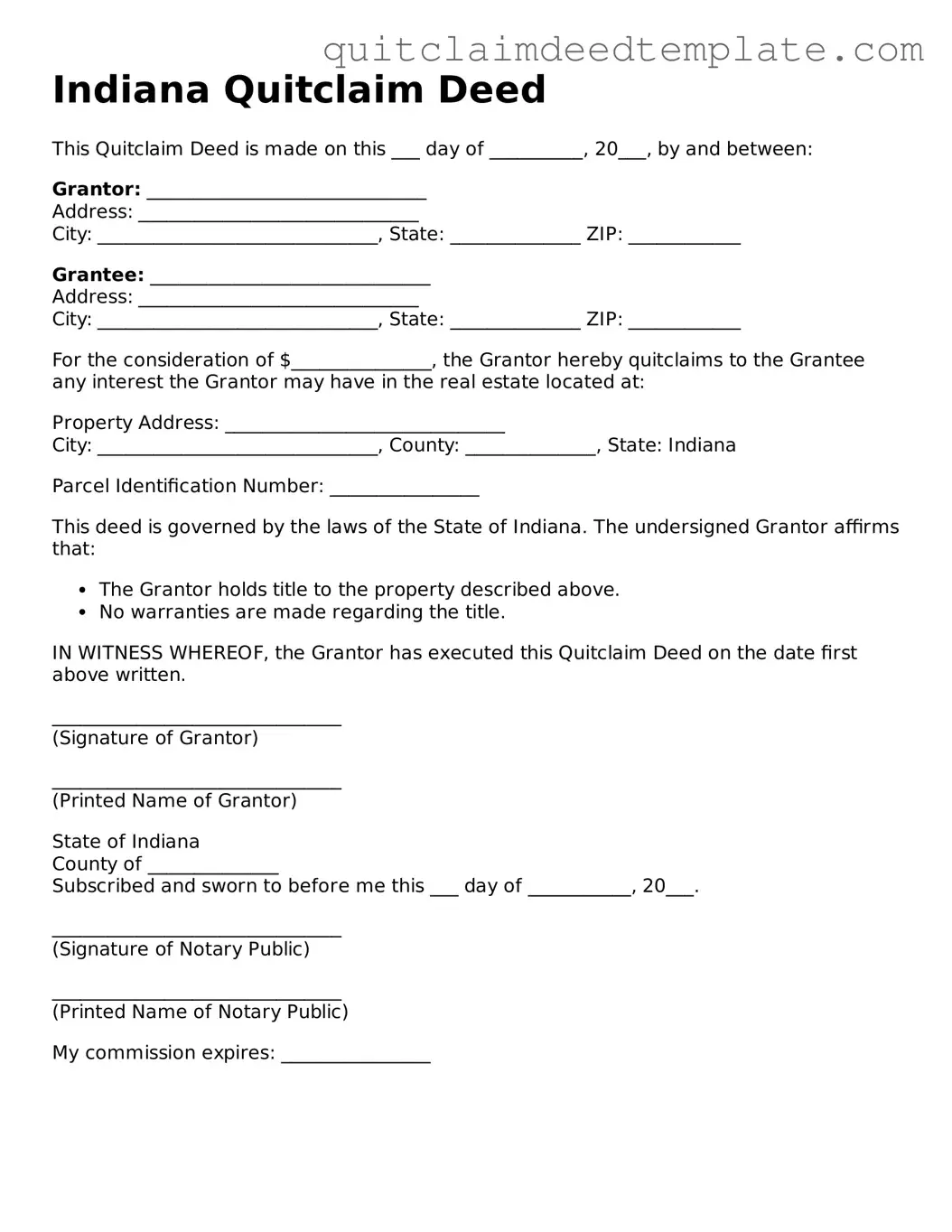Documents used along the form
When dealing with property transfers in Indiana, a Quitclaim Deed is often used. However, several other forms and documents may accompany it to ensure a smooth transaction. Below is a list of these documents, each serving a specific purpose in the property transfer process.
- Property Transfer Form: This form provides essential information about the property being transferred, including the legal description and the names of the parties involved.
- Affidavit of Property Value: This document is used to disclose the value of the property being transferred. It helps establish the basis for property taxes and assessments.
- Title Search Report: A title search report verifies the ownership of the property and checks for any liens or encumbrances. This ensures that the seller has the right to transfer the property.
- Mortgage Release or Satisfaction Document: If there is an existing mortgage on the property, this document confirms that the mortgage has been paid off and releases the lender's claim on the property.
- Property Tax Statements: Recent property tax statements provide information about any outstanding taxes owed on the property, which may need to be settled before the transfer.
- Power of Attorney: In some cases, a power of attorney may be needed if one party cannot be present to sign the Quitclaim Deed. This document grants someone else the authority to act on their behalf.
- Notice of Transfer: This document informs local authorities about the property transfer, which may be required for updating public records.
- Settlement Statement: Also known as a HUD-1, this statement outlines all costs associated with the property transfer, including fees and adjustments, ensuring transparency in the transaction.
Using these documents in conjunction with the Quitclaim Deed can help facilitate a clear and effective property transfer process in Indiana. It is advisable to review each document carefully and ensure that all necessary information is included to avoid complications down the line.
